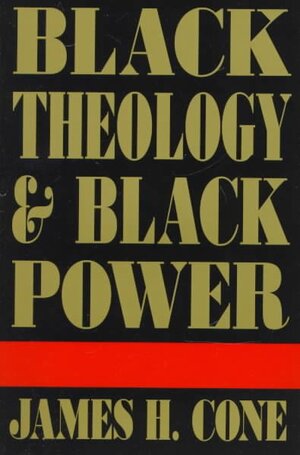The Hittites occupied the ancient region of Anatolia (also known as Asia Minor, modern-day Turkey) prior to 1700 BCE, developed a culture apparently from the indigenous Hatti (and possibly the Hurrian) people, and expanded their territories into an empire which rivaled, and threatened, the established nation of Egypt.
They are repeatedly mentioned throughout the Hebrew Tanakh (also known as the Christian Old Testament) as the adversaries of the Israelites and their god. According to Genesis 10, they were the descendants of Heth, son of Canaan, who was the son of Ham, born of Noah (Genesis 10: 1-6). The name they are known by today, therefore, comes from the Bible and from the Amarna Letters of Egypt which reference a "Kingdom of Kheta" identified today as the 'Kingdom of Hatti' (the designation the land of the Hittites was known by) but their own documents refer to them as Nesili, as do others of the time.
The Hittite control of the region is divided by modern-day scholars into two periods:
- The Old Kingdom (1700-1500 BCE)
- The New Kingdom, also known as the Hittite Empire (1400-1200 BCE)
There is an interregnum between these two which, to those who accept that version of history, is known as the Middle Kingdom. The discrepancy between those scholars who recognize a Middle Kingdom and those who do not arises from the fact that there was no discontinuity between the Old Kingdom and the New, merely a 'dark age' of less than 100 years about which little is known. The Hittite Empire reached its peak under the reign of King Suppiluliuma I (c. 1344-1322 BCE) and his son Mursilli II (c. 1321-1295 BCE) after which it declined and, after repeated attacks by the Sea Peoples and the Kaska tribe, fell to the Assyrians.
Little was known of the Hittites other than the references from the Bible and fragmentary documentation from Egypt until the late 19th century CE when excavations began at Boghaskoy (modern-day Bogazkale, Turkey) which was once the site of Hattusa, capital of the Hittite Empire. Hattusa was originally founded by the Hatti (an aboriginal tribe of Anatolia) in 2500 BCE, and their culture may have provided the basis for that of the Hittites.
The Old Kingdom
The Old Hittite Kingdom (1700-1500 BCE) is first evidenced by the sacking of Hattusa by the Hittite King Anitta of the neighboring kingdom of Kussara in 1700 BCE. The city had repulsed attacks by Sargon the Great of Akkad (2334-2279 BCE) and his grandson Naram-Sin (2261-2224 BCE) but fell to King Anitta who burned the city, cursed it, and cursed anyone who would attempt to rebuild it.
Not long after its destruction, however, it was re-built by another king of Kussara named Hattusili I whose name means 'One from Hattusa'. The vast kingdom which Hattusili had created fell apart as more and more regions rebelled against a central rule, and Ammuna did nothing to stop the insurgence or placate the territories in any way.
The actual day-to-day life and culture of the Hittites is equally mysterious, as the inscriptions which have been deciphered deal mainly with the kings and their campaigns. It is known that the Hittites wrote using Akkadian script but in their own Indo-European language.
At the same time, however, Akkadian was the lingua franca of the age, and Sumer (southern Mesopotamia) had long been in contact through trade with the Hatti, and so it seems more probable that the Mesopotamian culture had influenced the Hatti, not the Hittites, and the Hittites appropriated the Hattian culture through conquest. Those details of Hittite life and culture which have come to light seem to be slight variations on that of the Hatti
The New Kingdom
The history of the Hittites resumes with the so-called New Kingdom (1400-1200 BCE), also known as the Hittite Empire. Although there were Hittite kings before him (such as Tudhaliya I and Tudhaliya II), this history really begins with King Suppiluliuma I who took the throne c. 1344 BCE.
Under Suppiluliuma's reign, the vast kingdom of Mittani was reduced to a Hittite vassal state and the fertile Levant region, including important port cities like Byblos, were taken from the Egyptians.
The last king of the Hittite Empire was Suppiluliuma II, famous for his part in the first naval battle in recorded history in 1210 BCE, in which the Hittite fleet was victorious over the Cypriots. Still, the victory was the exception, rather than the rule, of Suppiluliuma II's reign, and the growing might of the Assyrians, combined with repeated raids by the Sea Peoples and the Kaska tribe, who had risen again, chipped away at the stability of the empire until it broke apart. Hattusa was sacked by the Kaskas in 1190 BCE and burned.
The Assyrians destroyed whatever they could not use from the Hittite empire and stamped the region with their own culture and values. The area was still known as "the land of the Hatti" down to the year 630 BCE, even though the people, by that time, no longer remembered the Hatti or the Hittite kings and their achievements.
The Complete History of the Hittites :iron-soviet:
The Rise and Fall of the Hittites in Ancient Anatolia :biden-fall:
Megathreads and spaces to hang out:
- ❤️ Come listen to music and Watch movies with your fellow Hexbears nerd, in Cy.tube
- 💖 Come talk in the New Monthly queer thread
- 💛 Read about a current topic in the news
- ⭐️ October Movie Nominations ⭐️
reminders:
- 💚 You nerds can join specific comms to see posts about all sorts of topics
- 💙 Hexbear’s algorithm prioritizes struggle sessions over upbears
- 💜 Sorting by new you nerd
- 🌈 If you ever want to make your own megathread, you can go here nerd
- 🐶 Join the unofficial Hexbear-adjacent Mastodon instance toots.matapacos.dog
Links To Resources (Aid and Theory):
Aid:
- 💙Comprehensive list of resources for those in need of an abortion -- reddit link
- 💙Resources for Palestine
Theory:
lol Mark Hamill did a video call with Ukranian drone operators, one of them had a nazi flag hanging behind them the whole time.
New Megathread Nerds!!! :posting: :ironicat: :iron-soviet:
-
🐶 Join the unofficial Hexbear-adjacent Mastodon instance toots.matapacos.dog
-
🌈 If you ever want to make your own megathread, you can go here nerd
@aaaaaaadjsf @Abraxiel @Abstraction @Acute_Engles @American_Communist22 @AnarchaPrincess @Antilope @Alaskaball @Aliveelectricwire @artificialset @bbnh69420 @BigLadKarlLiebknecht @bubbalu @buh @CatEars420 @cawsby @CDommunist @Cheesewizzard @Cherufe @ClimateChangeAnxiety @clover @comi @Commander_Data @ComradeCmdrPiggy @ComradeEchidna @context @congressbaseballfan @corgiwithalaptop @crime @CrispyFern @Cromalin @CyborgMarx @Dawn_Beveridge @Dirt_Owl @Dolores @Donut @drinkinglakewater @Dryad @ElChapoDeChapo @ElGosso @el_principito @EmmaGoldman @FALGSConaut @FidelCashflow @Flinch @flowernet @forcequit @Frogmanfromlake @Gabbo @GalaxyBrain @ghosts @Goadstool @GomerPyle @GorbinOutOverHere @GoroAkechi @Grownbravy @GVAGUY3 @HarryLime @hexaflexagonbear @HoChiMaxh @Hohsia @Ho_Chi_Chungus @Ideology @InevitableSwing @iwillavengeyoufather @I_HATE_JOHN_CALVIN @jabrd @JamesConeZone @Kanna @Kaputnik @Koa_lala @kristina @LesbianLiberty @marxisthayaca
@MaxOS @MelaniaTrump @Mindfury @mkultrawide @Nakoichi @PaulSmackage @plinky @PM_ME_YOUR_FOUCAULTS @PorkrollPosadist @President_Obama @PurrLure @Ram_The_Manparts @Redcuban1959 @RNAi
@Rojo27 @RoseColoredVoid @solaranus @SorosFootSoldier @Sickos @silent_water @Sphere @Spike @spring_rabbit @ssjmarx @take_five_seconds @TankieTanuki @Teekeeus @Tervell
@TheSpectreOfGay @ThisMachinePostsHog @ultraviolet @UlyssesT @Venustum @viva_la_juche @WhatDoYouMeanPodcast @Wheaties @WhyEssEff @WIIHAPPYFEW @wtypstanaccount04 @wombat @Yanqui_UXO @Zoift @Zuzak@thelastaxolotl @WhoaSlowDownMaurice @Quimby @Lydia
@CARCOSA @liberal @ella @all_that_is_solid @KenBonesWildRide @KiraNerys @TomboyShulk @DuckNuckem @SapGreen @Zangief @scumlord @COMMENT @Antisocial_Socialist @DOPESMOKERDENG
Remember nerds, no current struggle session discussion here on the general megathread, i will ban you from the comm and remove your comment, have a good day/night :meow-coffee:
I have maybe walked 30 miles in the past 3 days for no reason other than to get out of the house, and my feet, legs, and thighs are killing me.
On the bright side, my brain is doing better today. I'm starting to recognize some patterns of bipolar behavior that particularly involve interpersonal relationships, and have been getting some good advice from people. I think. Idk, not gonna think about it now, pizza is coming and damn I need a shower.
Also turns out I kinda really dig stenchcore music.
STENCHCORE!!!! ALSO WALKING!
Ooh also, if you want more bands, stupid amounts of info on bands or lyrics that might not be online, lemme know. Check out terminal sound nuisance on blogspot. He's a sweetheart and does really well written articles about bands/albums with high quality flac vinyl rips. It's an absolute goldmine of music but he also tracks the history and relationships bands had with others, political stances and whatever, it's a pretty deep history or homeless teens making noise but if you're dipping your toes into the sewage water of crust and anarcho punk, it's a great resource.
Ever heard of Swordwielder? I checked out one of their LPs today and really liked it.
It's been a long ass while since I've listened but yes I have! They're fucking sick, I totally forgot about them for like a decade. Gonna listen now!
Thanks! I remember trolling blogspots for punk albums back in college, that's a blast from the past.
Also Filth of Mankind from Poland, Instinct of Survival from Germany and Fatum from Russia
If you've never listened to Skaven, stop everything and listen to fucking Skaven. They have a split with Dystopia and an epic 7" with 2 eight minute songs
-
goddamn my friend-turned-gf/wilderness expedition partner is actually way more politically left than I knew she was, she's read zero theory but is totally fine with stuff like property damage during protests and thinks marxism is cool
we've ran off together for almost a month now and I've never been happier. A couple weeks left before we will likely return to jobs/responsibilities for a few weeks until the JMT
Daily reminder to increase the amount of violent rhetoric on hexbear. We gotta pump those numbers up. Our shareholders need a new yacht.
Me
killingwindows update process::who-did-this: i’m doing it for the rhetoric points on research gate
I was saying a new game should have private servers like games used to back before games as a service made everything suck and someone was like "but what about piracy and cheating and legal issues!" so gamers are fully reactionary now gamers delende est I will be positng pictures later of puncturing an entire pallet of mountain dew while reciting the manifesto from memory
Might be bailing on my therapist of 5 years this week. Kind of weird
I remember your post. Hope it goes well, changes like this are always weird and complex at first. Good luck in finding a new therapist
Have had a wild evening. My brother is going through a depression and I injured his manly pride last time we met
So today he's been blowing up my phone telling me how disrespectful I am and how he loved me before I came out as a trans and now my entire personality has changed and I'm apparentely causing him slights every single time we meet actually and basically he's having a full blown meltdown on my phone.
Obviously there's more to this, but I'm just kinda baffled by this. I've started calling out his reactionary BS and apparentely I can't be talked with because I refuse to take his point eventually after a long debate.
Men really do be doing this instead of just going to therapy.
Oh and the best part that I should feel patriotic about my piece of shit country because they're allowing me to transition (still pending, been a year) and how I disrespect our veterans who fought and died to give us a wellfare state (they actually locked up the communists who did that and tried to commit a genocide on russians)
Thanks.
Definitely been a baffling few days. Love to be called self-centered by a rightwinger for not accepting his point of view on a lot of things.
Can't get over how Biden is being super pro-Ireland and pissing off a bunch of British people. He's so unintentionally funny
He apparently took a selfie this week with one of the heads for the militant branch of the IRA lmfao
Gotta give a shout out to toddlers and the parents that indulge them wanting to check watch us make pizzas. We do it from scratch and classico style with dramatic throwing of dough and a crazy hot oven with live flames. We have a semi visible kitchen and pretty often when little kids come in they come watch and ask questions about it and stuff, it's cute as hell and it's people who think my job is cool as hell and thst kinda rules. Toddlers know cool better than anyone.
Working the oven in summer :sweat:
Working the oven in winter :comfy:
Kids watching pizza go in the oven :isaac-pog:
We have really good ventilation, the oven isn't too bad. But in winter having it off for a little bit can be nice, but it's like 620 degrees so it doesn't take long to heat stuff up.
It's gotta look so cool for kids. We're throwing things and playing with fire and big sticks. It is pretty cool when you step back and lil kids are grateful at thst perspective, makes it feel like you're the most awesome person cause until they leave, for them you are.
pizza cooks are the new airline pilots tbh, with way lower risk of being embroiled in a terrorist plot
I've for sure seen some adults who are pretty compelled by the show as well and to those ones I'd like to say "It's not okay to hit on people while they're at work unless it's me." I've gotten some major eyes from some VERY pretty customers.
Two of our servers are elementary school substitutes as their day job, we also supply dough and judgements for an annual local elementary school pizza contest. It'd be cool to host a how working a restaurant works field trip if we could close for it. We could probably work that. I'd just like to spend a day teaching kids how to make awesome pizzas cause it would be really really fun
Former friend who was dead to me died to everyone else today. He broke into my house and attacked my roommate with a crowbar to steal drug money so fuck that piece of dhit. He was scum in myriad other ways but here's my overall point. Fentanyl is the new AIDS in every way except cops didn't pretend to catch AIDS. And the pretending you had to be gay to get it. Also it's like...way more likely that the CIA had a big hand in the fent thing. I've lost 7 people that I've been close to in the last 2 years and the people I kinda know and friends of friends make it like 40 or so people. That's two years within my social circle, most of these people were heavy opiate users but just as many were people that did keybumps on weekends and got a shit batch. Small violin for this particular asshole but what it's symptomatic of is fucking genocide on addicts and nothing less.
People I used to know in various club scenes around the country would post warnings about bad heroin going around every couple of weeks. They've mostly stopped and I figure it's probably due to social media censorship rather than the heroin supply getting cleaned up. : p (actually they might have just got old and aged out now that I think about it).
Reading up on the actual history of how fentanyl became such a massive problem is pretty incredible. idk if the CIA was involved but there's an open, well documented collaboration between Perdue, a bunch of different "pain expert" Doctors, major medical industry magazines, lots and lots of Dr.s, the FDA, and a couple of other government groups to push "Heroin except it's safe!" as a real thing. They just straight up told doctors "Yeah Oxy is heroin except you don't get addicted!" and Doctors "believed" that.
There was a whole coercive aspect, too; They pushed this idea of "pain management" that hadn't much existed prior, with the idea being that patients shouldn't experience any pain or discomfort. There was a lot of pressure from professional orgs and the fear of legal action if Drs didn't conform to the new "pain managment" paradigm. Put the two together and you get Dentists handing teenagers like 70 percs or oxys for having a molar out, and people actually taking them bc that's what your doctor told you to do, so it must be safe, right?
Then when the whole "A million people were murdered for profit" thing started to break in the news the DEA cracked down, Doctors all over the country turned off the tap, and all these people who were addicted to Oxy had to find something to replace it with. And fent is much more compact, and thus easy to smuggle, than heroin, so we get shitloads of fent and dirty heroin.
The whole thing is just incredible. A massive, massive "conspiracy" where the drug industry, the entire medical profession, and government regulators worked together (mostly in the open!) to cause massive social violence for profit.
There's so much extreme violence on the left. Owls attacking, dinosaurs roaring, cats scratching, dogs arfing.
god, why couldn't I have been born in like the 1400s or some shit, live in a monastery making cheese for my 50-odd years of life, rather than living at the end of the world watching it all die before I do :doomer:
Actually depending on where(western eurasia) the 1400s wwere some of the best years to have been born in.
Best real wages before the 20th century. Beter real wages than many places today.
Its a somewhat complicated question since the economy was not exactly monetised so the majority of the compensation was in spice. However some aproximations can be made:
University of California, Davis https://faculty.econ.ucdavis.edu › ...PDF The Condition of the Working-Class in England, 1209-2003 - Index of
Since the basis of the argument is the compensation for a days work an alternative explanation is that they earned less but had proportionaly more free time.
That free time isn't what we think of as free time. That's time that you're working your own field instead of the Lord's so you can eat later in the year, washing your clothes in a river and other necessary household chores that were incredible time consuming and labor intensive. You just got a different kind of work day. Leisure time was still way lower.






















